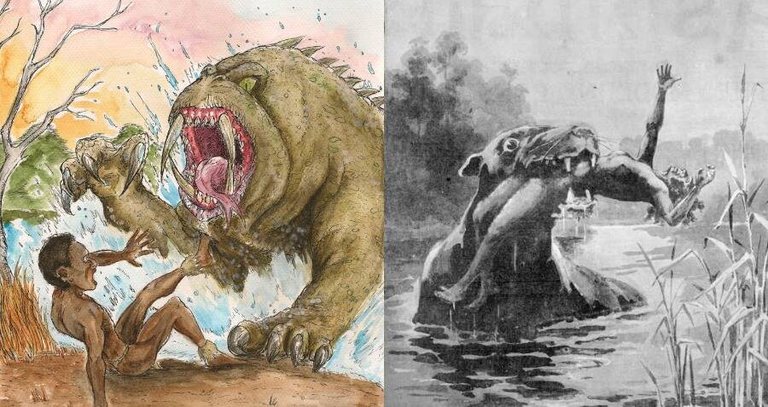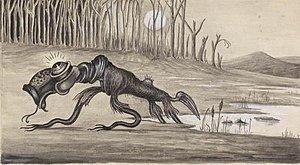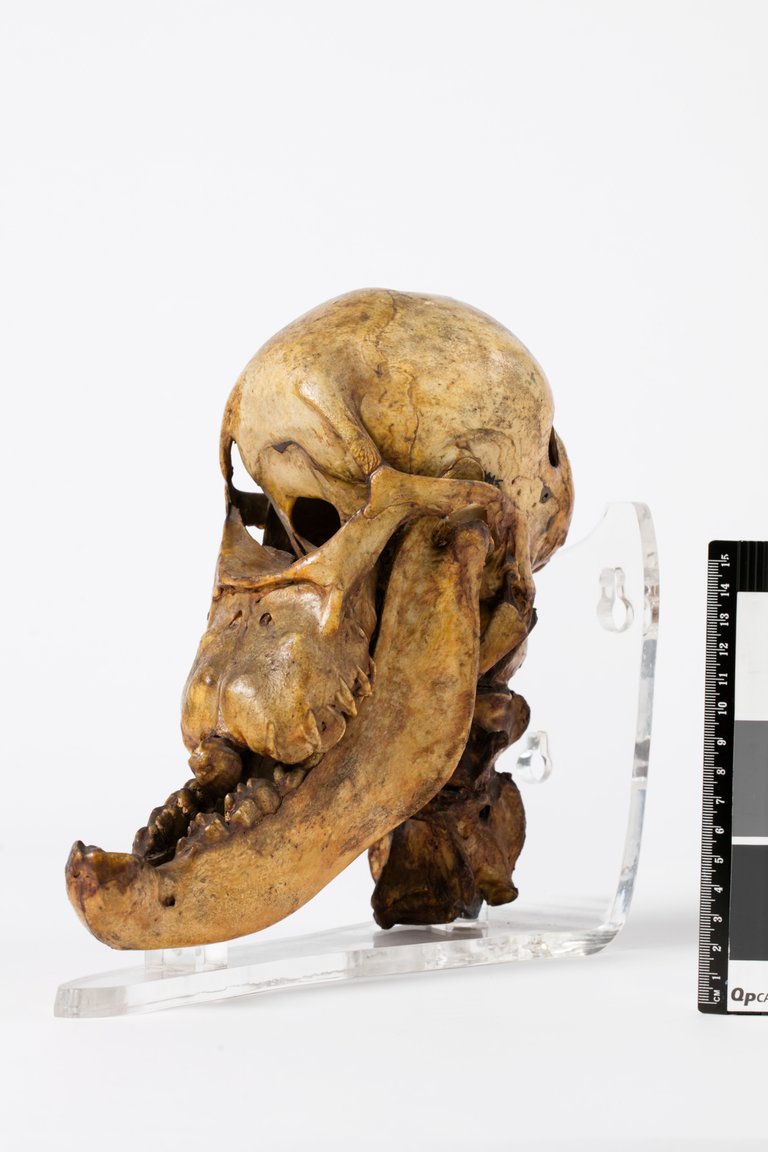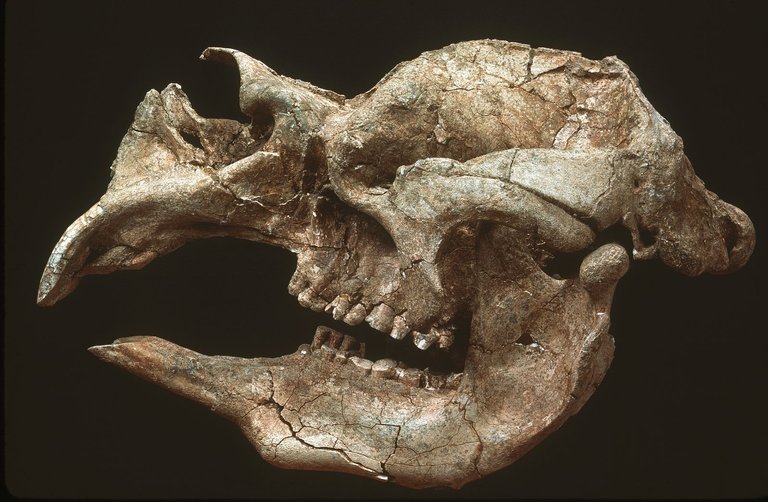Mythical Monsters, Critters, and Cryptids: Bunyip
(

Mythical Monsters, Critters, and Cryptids
I have always been a fan of the supernatural and for the longest time, I have been considering writing a book about the various creatures that can be found worldwide. I first considered going from continent to continent, but some continents are so rich in these creatures, that I could get lost in the research. Instead, I decided to go alphabetically, and once I hit Z, I will start again at A.
Because this is research-based writing, I will include all the references that I use at the end of the piece, so all of you can see where I get my information. I will also include further references that you can all enjoy in your own time. So, without further ado, let me introduce you to the first of the monsters in this new series: The Bunyip
Creature: The Bunyip, derived for the Aboriginal word “banib” meaning water spirit or amphibious spirit-being.
This water-dwelling creature can be found in many inland water sources from billabongs, rivers, lakes, and more. Often described as a large monster, this amphibian-like creature has no hesitation when it comes to killing. The Bunyip remains hidden by day only to emerge at night to hunt, preferring the flesh of women and children. However, it’s not above simply drowning those that come close to it.
What is it?
The Bunyip is a creature that is found in Australia that has so many descriptions it will make your head spin. Some descriptions say it is a four-legged creature that looks seal-like. Others say it’s an amalgamation of kangaroo, crocodile, emu, and horses, making it a chimera of sorts. Other descriptions include the beast having fangs, 1-2 eyes, horns, flippers, tusks, scales, and even feathers. Even its size is said to vary from that of a dog to that of a horse. No one truly knows what the beast looks like.
Before European settlers came to Australia in the 19th century, there were multiple groups of the indigenous people of Australia. In fact, there were over 250 different languages spoken in Australia. It’s likely for this reason that the Bunyip had so many different descriptions. It also goes by other names such as the Katenpai, Tanutbun, Mulgyewonk, and the Mulyawonk.
It is said that you will know that a Bunyip had taken up residence in a particular water source when its loud roars and booming noises it makes were heard. Some stories tell that a Bunyip even had powers of sorcery and could cause illness or lure people to where it lay waiting to attack.
Regardless of how dangerous Bunyips were, it was taboo to harm them in any way. There are stories of people hunting Bunyips only to meet grisly fates or diseases after they had done the deed. Bunyips were used as a warning of the dangers of inland water and to keep people safe from the unpredictability and its dangers.
Historical significance
The Bunyip had been part of the Aboriginal memory for centuries before European settlers arrived in the 19th century. These people were shocked at the strange fauna found on this continent, so it was no surprise when they heard strange sounds or saw movement in the water, they became concerned over what lived in the murky depths. Especially when the indigenous people were warning them of the dangers.
However, not all Bunyip sightings were treated with fear. Many “level-headed” scientists would explain away the sighting of Bunyips by explaining that it was nothing more than seals, crocodiles, platypuses, fossil bones, sounds from swamp birds, and everyone’s favourite cope-out, swamp gas. That was until a skull was found.
This odd-looking skull was found on the banks of the Murrumbidgee River in 1845. It wasn’t until 1847 that the skull was sent to what is now known as New South Wales to be examined. The cycloptic skull would later go on displaced in the Australian Museum, Sydney, and was advertised as a Bunyip skull.
 “Bunyip skull”
“Bunyip skull”
cite
However, was this truly concrete evidence of a Bunyip? According to William Sharp Macleay, the skull found was nothing more than the malformed skull of a horse. As if this wasn’t bad enough, a second skull (with some fur) was discovered later and sent to Sydney’s Macleay Museum only to be determined to be a hoax with some clever taxidermy.
Scientific take
Science has quite a lot to say about what the Bunyip could have been.
The sightings of odd creatures in the inland waters are easily explained by the tides and how they affect river mouths. When the tides are high, the river mouths open to the ocean, allowing all manner of creatures to swim up the channels. These creatures would become trapped as soon as the tides lowered. This is likely why the shape and size of the Bunyip would change as dugongs, seals, and even sea lions would be seen swimming in the waters where they shouldn’t be.
As to the booming sounds the creature made, this is explained by the Australia Bittern bird (Botaurus poiciloptilus), aka the Bunyip bird, which has a booming call and nocturnal habits. Here is a video of its call courtesy of Eugenijus Kavaliauskas. Honestly, if that sound echoed across the water in the middle of the night, it would make most people pause with fear.
Then there are the fossils and the ancestral memories of those who first occupied the Land Down Under. Below is an artist’s rendering of the rhino-sized herbivore Diprotodon optatum. This ancient wombat matches some loose description of the Bunyip, but the most striking similarity it the shape of the skull, which is similar to the first skull that was found in 1845.


cite
As for people disappearing along the water edges at night, the Australian saltwater crocodile is likely the culprit for people disappearing or having limbs torn from their bodies. In the dark of the night, all the person would see are scales and teeth.
Modern depictions
Not long after the arrival of European settlers, the way the Bunyip was depicted started changing. In some cases, it became a half-fish humanoid with matted reeds for hair, and in others it retained its original shape but had become a herbivore, never bothering anyone.
Even the term “bunyip” is used today to describe a person who is so stupid and useless that it’s practically offensive for them to exist.
The Bunyip was very popular in books in Australia in the 19th and 20th centuries which included gems such as
•The Brown Fairy Book (1904 Andrew Lang) had a story that was adapted from a piece written in the Journal of Anthropological Institute from 1899
•Gloop the Gloom Bunyip (1962, Colin Thiele)
•The Monster That Ate Canberra (1972, Michael) had the Bunyip character named Alexander Bunyip. This was later adapted to a children’s show as shown in the link below.
Alexander Bunyip’s Billabong
Australia hasn’t forgotten the Bunyip and still celebrates it. In 2011, a Bunyip statue was erected in front of the Gungahlin Library. This wasn’t the only statue, as there is a coin-operated one at Murray Bridge, South Australia, which was created by Dennis Newell in 1972).
The Bunyip didn’t remain in the Australian media, as its legend circulated through to the rest of the world in films such as The Long Weekend (1978), video games such as Ty the Tasmanian Tiger where the Bunyips were peaceful mystic elders, Even My Little Pony: Friendship is magic had an episode title P.P.O.V. (Pony point of view) where a Bunyip appeared (2016). A Bunyip even appeared in a book by C. Robert Cargill (2014), titled Queen of the Dark Things.
Protection from
There is very little you can do to protect yourself from a Bunyip. However, if you happen to stumble across one, it’s best to treat it as you would any other predator. Get out of the water as quickly as possible and move away slowly from the creature. Keep your eye on it, don’t run, and move slowly away from its territory. If you can reach a branch or stick, this can be used to create space between you and the creature if it does come after you. Seek shelter or cover to protect yourself if the Bunyip decides that you’re a tasty morsel worth hunting.
Resources:
Giacomazzo, B. (2022, January 25). Meet the bunyip, the monstrous cryptid said to inhabit australia’s swamps. All That’s Interesting. https://allthatsinteresting.com/bunyip
Kavaliauskas, E. (2015). Great bittern male song [Video]. In YouTube.
Mancini, M. (2023, June 26). Does the bunyip really haunt the australian wetlands? HowStuffWorks. https://science.howstuffworks.com/science-vs-myth/strange-creatures/australian-bunyip.htm
Randika, N. (2023, February 27). Bunyip the monster from Australia. Any Mystery. https://anymystery.com/bunyip-the-monster-from-australia/
Storied. (2020). Bunyip: Australia’s mysterious amphibian monster | Monstrum [Video]. In YouTube.
The Editors of Encyclopaedia Britannica. (2021). Bunyip. In Encyclopædia Britannica. https://www.britannica.com/topic/bunyip
Wikipedia. (2020, May 9). Bunyip. Wikipedia. https://en.wikipedia.org/wiki/Bunyip
Further viewing:
And that is the legend of the Bunyip. I really enjoyed this legend as it was always a monster I never understood, especially with the many descriptions of the beast. Now that I have had the time to do more reading, I must say, it is one of my favourites!
Over the weekend I was debating which would be the next creature I would look at. Since I have already done two creatures that generally cause harm to people, I decided on something a little less...violent. I will be discussing the Church Grim next week. I hope all of you will join us once more!
Previous Monsters
Aswang
Reader's List
@weone, @merenludick, @clairemobey, @therneau, @blitzzzz, @pravesho, @joetunex, @captainquack22, @irisworld, @braaiboy, @sketchygamerguy, @fuego-oscuro, @felt.buzz, @dibblers.dabs, @beeber, @brittandjosie, @tamacvet, @alonicus, @joetunex, @zakludick , @pixelhuntersam, @untamed-essence
I have to wonder why the Australians would come up with a fictitious creature that wants to eat them, when there are so many real life ones that do.
When humans first arrived there, there were all kinds of species of giant bird and megalania (basically giant Komodo Dragons or monitor lizards), so I reckon it's possible that ancestral memories of one of these apex predators led to legends of the Bunyip.
They had something similar to an elephant bird, and the cassowary is pretty damn scary too.